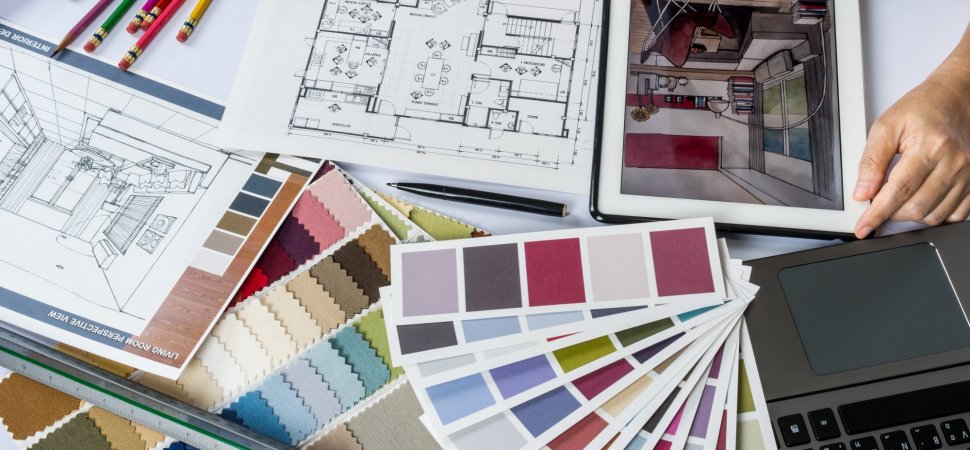Yesterday I walked into my home office and examined the space from a fresh perspective. It hasn’t had a facelift in about ten years and I’ve hardly noticed its dingy appearance. Don’t get me wrong, I love my office but it’s simply out of date and no longer reflects my personality. It’s time for a change.
Approaching the challenge like any diligent, problem-solving coach, I did my research. What does science say about an office space that boosts energy, creativity, and productivity, all while projecting a safe, calm feeling for clients? Yes, it’s possible, and you can do it all on your own. Here’s what I’ve learned.
1. Use color, but not just any color.
Color psychology studies (and there are many) reveal changes in the body and brain when people view certain colors. These changes influence productivity, creativity, health, stress levels, focus, communication, and emotions. That’s some powerful influence!
Color psychologist Angela Wright explains the phenomenon this way: “Color travels to us on wavelengths of photons from the sun. Those are converted into electrical impulses that pass to the part of the brain known as the hypothalamus, which governs our endocrine system and hormones, and much of our activity.”
First decide what’s most important about how color affects you, your employees, and your visitors. In an interview with Chris Bailey, Wright offered this simple breakdown of the effects of color on the mind: “The four psychological primaries are: red, blue, yellow, and green. And they affect the body (red), the mind (blue), the emotions, the ego, and self-confidence (yellow), and the essential balance between the mind, the body, and the emotions (green).” But it’s not that simple. Bailey nicely breaks down the process of choosing just the right color in this article.
2. Trendy furniture is nice, but ergonomic is essential.
Trendy furnishings are nice but be careful not to go too trendy or you’ll be furnishing the space again within a few of years. While the look and feel of your furniture are certainly important–ergonomic design is of most importance.
Prevent ergonomic injury by learning more about safe chair and desk options. Studies show that changing posture during working hours reduces odds of injury, so make sure that your chair adjusts in every way possible and has breathable fabric. I spent a small fortune on my office chair and I thank myself for it every day. This ergonomics research on emerging risks and solutions breaks it down nicely.
3. Protect your back–literally.
Before you purchase new furnishings give careful thought to placement. Your natural instincts will keep you on alert if your back is facing a door or window. If your space allows, face the door so you can always see who’s coming in or passing by. Even in a home office, your instincts will keep you in a subtle state of alertness, regardless of an empty house, and even this low level of stress may make it difficult to focus. If your back must face the door, position or hang a mirror so that you can see behind you without having to turn around.
4. Introduce live plants.
Again, countless studies support the claim that indoor plants in the workplace provide better air quality and have many psychological benefits. This study draws a link between decreased sick days and increased productivity when plants are placed strategically throughout the office.
Here’s a list of the most popular, easy to care for, indoor plants:
- Rubber tree
- Corn plants
- English Ivy
- Aloe
- Bamboo
- Peace Lily
- Parlor Palm
- Snake plant
- Boston Fern
5. Display your dream board.
While many dismiss the idea of a dream board (also referred to as a vision board) there is science behind this theory. Personally, I’m never without an updated vision board because I know what an impact it has on my life and business.
It’s simple and fun, so make this project a family event. I tell you how to build your dream board in this article.
6. Organize and eliminate clutter.
While in a previous article I told you why a little clutter can enhance creativity, major clutter creates stress. It dominates your mind because it keeps so many things on your radar. You glance over at the stack of invoices you need to pay, for instance, and you instantly feel pressured. Put your stacks away, and you’ll feel less overwhelmed, exhausted, and depressed. To further eliminate stress, organize things so they are easy to find.
If your storage and filing systems are openly visible, make sure they coordinate in color and style.
7. Proper lighting makes all the difference.
The benefits of natural light are undeniable. The southern exposure in my office keeps me happy, alert, and focused. If you don’t have the option of a sunny exposure purchase a full spectrum light. Here’s a recent review citing the top ten light therapy options.
Poor lighting can cause eye strain and headaches, so make sure you have ample light over your work area.
8. Make room for a break area, even in a small office.
Even the smallest office can contain a makeshift break area. I have a comfortable chair near the window so I can take in a bit of nature. I value the time it gives me away from the computer–even though the desk is only about four feet away. A change of environment will give your brain and body a much-needed break and can spark creative insights.
If your office space houses employees then a break room–even a full-blown lounge–is essential. Take a page from the Google book of company culture and create a casual co-working space to encourage collaboration and inspire creativity.
Now you have everything you need to create a space that inspires and energizes you. It’s well worth the time, thought, and investment.












